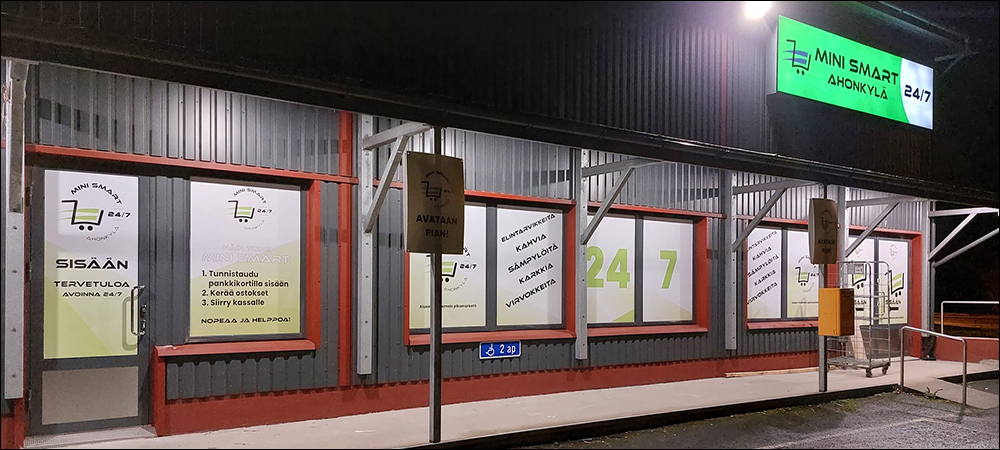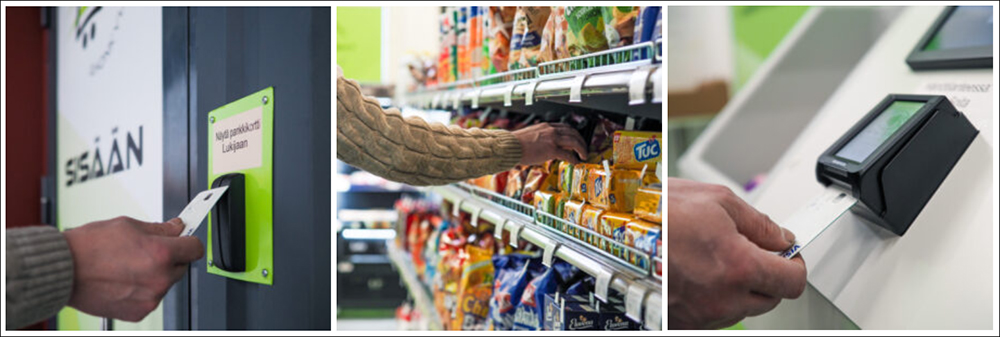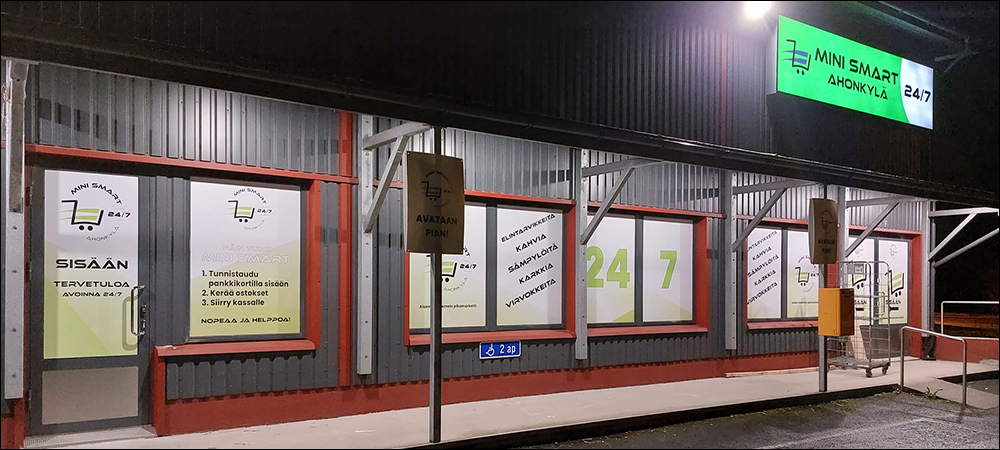For years, residents of Ahonkylä, Finland, along with commuters passing through that village on a thoroughfare, had few local shopping options. The town of approximately 2,000 residents is growing, but the number of potential shoppers has been insufficient to sustain a typical store. This was a problem that area resident Petri Jaakola wanted to solve.

There was enough demand for convenience shopping that Jaakola considered what options could support those in the area. The result is a radio frequency identification (RFID)-enabled store launched by Jaakola, known as Mini Smart Ahonkylä. The store remains open 24 hours a day and is mostly automated, using Nordic ID readers for encoding tags at the checkout area and at exit doors, as well as Confidex RFID labels on all merchandise. The store uses payment software from Seita Technologies Oy, integrated with Nordic ID’s RADEA cloud software to manage inventory and sales data, and to enable access and purchasing via bank cards.

Petri Jaakola
Jaakola intends to expand the model to other stores in the area, bringing service to remote locations and otherwise challenging environments, according to Patrick Willekens, Nordic ID’s head of European sales. Mini Smart Ahonkylä, which opened in 2022, serves the area’s growing population, with automated access to around 800 food and beverage staples, including milk, bread, coffee and soda. The only employees onsite are those who stock new inventory after sales.
Each product has a Confidex Ferrowave Flag tag attached to it, with a unique ID number that is linked to data in the cloud-based software regarding the item’s stock-keeping unit. The RFID technology not only enables self-purchasing, but also keeps an automated inventory count to ensure products do not go out of stock, says Juha Porkka, Nordic ID’s customer project manager.
Self-Service Shopping
When shoppers arrive at the entrance, they first identify themselves using their credit or debit card, by tapping the card against a Nordic ID Sampo S2 Near Field Communication (NFC) reader to be identified. Once the card has been confirmed, the door automatically unlocks and they can enter. Approved shoppers can then go about selecting their purchases. Once they are finished shopping, they can place the tagged items on the counter at the point of sale.

A Nordic ID UHF RFID reader built into the self-service station identifies the products, after which the RADEA software, residing on a dedicated server, displays the results for the shopper on a touchscreen. Once they approve the list of items, the software then completes the payment transaction. “After a successful transaction,” Porkka says, “the software logs this data, which notes that these items are paid for and can leave the store, and also that the door can be opened.” The customer pushes a button at the doorway to exit.

Patrick Willekens
A Nordic ID AR85 RFID reader is installed there as well, which interrogates all tags as the shopper leaves. The software queries its inventory data to confirm that the items whose tags are being read were purchased. If the reader detects a tagged item that has not been paid for, the system displays a notice for the shopper to return inside and purchase that product. The RFID data, uniquely identifying each product, provides management with a view into the inventory onsite, as well as all purchases and the freshness of merchandise.
The software prevents the sale of goods past their sell-by dates, and the system can automatically discount products as their expirations approach. When goods need to be replenished, the software ensures prompt restocking. A staff member visits the store with new products, and a Nordic ID HH83 handheld reader counts inventory and identifies products, such as any that have expired. Because goods arrive at the store untagged, the site leverages an encoding station at which UHF RFID tags are read and linked to each product being prepared for stocking on store shelves.
For example, Porkka says, an employee can select 10 new blank tags, then place them on the encoding station and use the RADEA software to update the information associated with those tags. The HH83 handheld is used for individual tag association, as well as for updating tags, finding products, conducting inventory counts and collecting expiring products.
The Right Technology to Meet Challenges
The retail startup worked with Nordic ID from the early planning stages to deploy the solution. The technology company selected the Ferrowave Flag on-metal tag due to its versatility on a wide variety of food items and form factors in packaging. The tags’ flag structure is designed for easy attachment even on challenging surfaces, such as metallic packaging or liquid filled containers, explains Miika Pylvänäinen, Confidex’s director of RFID product line. The label can be mounted with adhesive, he adds, and can operate well at various temperatures.

Juha Porkka
The RADEA software manages data related to each tag, including product names, categories and expiration dates. The environment posed multiple challenges, Willekens recalls, including the relatively small space in which many tagged goods had to be managed. “For a successful automated store, a smooth customer experience and flawless merchant experience are key, which leaves no room for erroneous tag readings,” he says. “In an area of 100 square meters [1,076 feet] where thousands of tags are present, that need to be properly identified, this is not a trivial task”

Miika Pylvänäinen
The return on investment (ROI) was crucial for the business venture, Willekens notes, adding that if the technology failed to operate properly, or if it required corrections, that would affect the ROI, as well as customer satisfaction. “One of the challenges was to control the reading zones within the limited space,” he states. “The reader at the checkout station and the reader at the exit door should not read items that are still on the shelves, to avoid overcharging or false-exit alarms.”
Confidex recommended two separate doors for entrance and exit, to prevent stray tag reads and ensure that no tags leaving the store would be missed. Since its launch in October 2022, Mini Smart Ahonkylä has been providing retail access to village locals and commuters passing through the area. “The technology from Nordic ID, and the Confidex RFID labels, make it easy for shopkeepers to operate multiple shops with minimal amount of staff,” Willekens says, “allowing 24-7 service at remote locations, which would be very challenging without this technology.”
Key Takeaways:
- Self-service stores in Finland can serve customers in low-population areas via RFID technology, enabling them to automate inventory management, shopper purchasing and electronic article surveillance.
- Since the launch of Mini Smart Ahonkylä, additional stores have been opening in other regions of the country.


